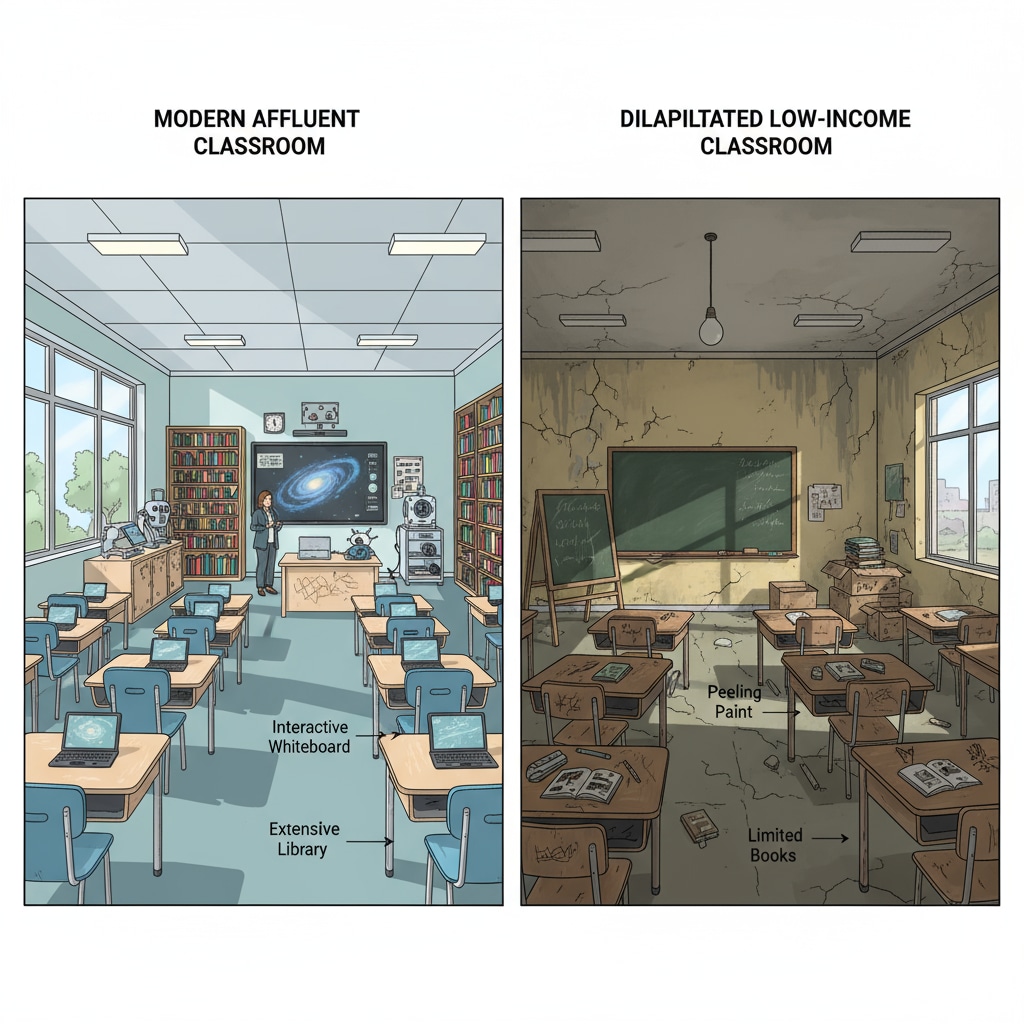The educational system in the United States is often hailed as a cornerstone of opportunity, yet it has insidiously become a powerful tool for social class screening. American schools, which should be bastions of learning and growth, are instead caught in a web of systemic issues that disproportionately affect students from different social strata.

The Illusion of Equal Education
On the surface, the US education system promotes the idea of equal opportunity for all. Public schools are meant to provide a free and quality education to every child, regardless of their family background. However, in reality, significant disparities exist. For example, schools in affluent neighborhoods often receive more funding, better resources, and highly qualified teachers. According to National Center for Education Statistics data, these schools can afford to offer a wide range of advanced courses and extracurricular activities. In contrast, schools in low-income areas struggle with limited budgets, outdated facilities, and high teacher turnover rates. This stark difference in resources creates an uneven playing field from the very beginning.

The Role of Standardized Testing
Standardized testing has become a central part of the American education system. While proponents argue that it measures student achievement and holds schools accountable, it has inadvertently become another means of class screening. Students from higher social classes often have access to test preparation resources, tutoring, and a home environment that fosters academic success. As a result, they tend to perform better on standardized tests. Britannica’s insights on standardized testing highlight that these tests often reflect not just a student’s knowledge but also their socioeconomic background. This can lead to lower-income students being funneled into vocational or remedial programs, while their wealthier peers gain access to more prestigious educational opportunities.
The US school system, despite its noble intentions, has deviated from its true educational purpose. It has become a complex mechanism that reinforces social class divisions. Addressing these issues requires a comprehensive overhaul of funding models, a reevaluation of testing methods, and a commitment to providing equal educational opportunities for all students. Only then can American schools truly become places of learning and not just class screening facilities.
Readability guidance: This article uses short paragraphs to present ideas clearly. Each section provides key points about how the US educational system functions as a social class screening tool. The use of examples and external references helps to clarify the issues. Transition words like “however,” “in contrast,” and “while” are used to connect ideas smoothly.


